on Diesels, Hybrids, EVs, Autonomy, & Plenty of Numbers, Too
Diesels still have life left in them. . .a clever approach to lighting. . .an equally clever approach to exterior finish. . .Erik Buell’s new bikes. . .the new Prius Prime. . .EV demand. . .and more
Don’t Discount the Diesel (Yet)
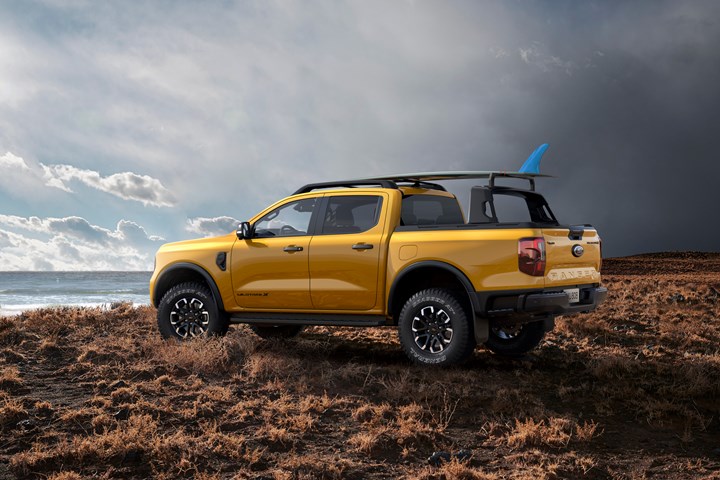
The Ford of Europe Wildtrak X Ranger variant. Diesel is standard. (Image: Ford)
“Ford has an ambitious plan to lead the electric vehicle revolution. We are on track to reach an annual targeted production run rate of 600,000 electric vehicles globally by the end of 2023, and 2 million by late 2026. Electric vehicles are expected to account for half of Ford’s sales by 2030, and in Europe 100% of passenger cars are expected to be all-electric by 2030 and 100% of light commercial vehicles to be zero-emission by 2035.”— Ford “Integrated Sustainability and Financial Report 2023”
While it would be easy to quibble about who is actually leading “the electric vehicle revolution”—Tesla produced 1,369,611 vehicles in 2022, which is double what Ford plans to by the end of this year—there is something interesting found in the Ford ISF report that has nothing to do with its laudable efforts to go carbon neutral “no later than 2050.”
It is the bête noire of environmentalists: the diesel engine.
The word appears 30 times in the 119-page Ford document.
Certainly a fraction of the 247 uses of electric in the report.
But diesels haven’t left the Ford portfolio.
And the company points out:
- “Modern diesel engines can achieve 20-30% better fuel economy than comparable gasoline engines in specific markets and segments”
- “All our diesel vehicles are compatible with low-level biodiesel blends”
To the last point:
- “All our diesel vehicles are compatible with low-level biodiesel blends including B20 in the U.S., Thailand, and Malaysia; B7 in Europe; B30 in Indonesia; and B15 in Brazil. Also in Europe, our Transit, Transit Custom, Transit Courier, Transit Connect, and Ranger are compatible with renewable paraffinic diesel fuels such as HVO, renewable diesel and e-diesel, and can be used at higher blends, typically from 33% to 100%.”
While the various Transits are often commercial vehicles, there’s that Ranger, mainly a consumer vehicle.
The Ranger (Euro Edition)
The latest-generation Ranger was revealed in late 2021. The order books opened in 2022. Deliveries began in 2023. (It is not in the U.S. yet.)
When the Ranger was revealed, on offer were:
- Single-Turbo 2.0-liter in-line four-cylinder diesel
- Bi-Turbo version of the above
- 3.0-liter V6 turbodiesel
Last month the Ranger Wildtrak X and the Ranger Tremor were announced.
And “all Wildtrak X models” have a 2.0-liter EcoBlue bi-turbo diesel under their hoods (202 hp; 369 lb-ft of torque).
And while it might seem unsurprising that a vehicle built for off-road adventures would have a diesel, last Fall Ford of Europe announced the “ultra-high specification Ranger Platinum pickup.” It is powered by a 237-hp, 3.0-liter V6 turbodiesel.
Know that according to Ford of Europe the Ranger had 44.9% market share in 2022, and eight consecutive years of segment leadership.*
What’s the Point?
Ford execs understand that while EVs garner more attention—including attention from the investment community—internal combustion engines still matter.
After all, if 50% of its sales are “expected to be” EVs by 2030, that mean 50% of its sales won’t be.
What’s more, note the reference to “specific markets and segments.” While it may be easy to get liquid fuels, electrons may not be so simple to access everywhere.
As the European Automobile Manufacturers’ Association pointed out last Fall:
“Not only is there an insufficient number of electric charging points along the road networks in most EU countries, but the vast majority of these do not charge quickly enough.”
And while this is not a Ford of Europe market, consider this from Statista: in 2022 the leading EV market in Africa in 2022 was South Africa. . .which had “about 1,000 electric vehicles”—out of a total fleet of 12-million vehicles.
==
*The countries that the Ranger is available in include Austria, Belgium, Britain, Czech Republic, Denmark, Finland, France, Germany, Greece, Hungary, Ireland, Italy, Netherlands, Norway, Poland, Portugal, Spain, Romania, Sweden, Switzerland, Türkiye
///
Don’t Put a Fork in It (Quite Yet)
“The advanced gasoline technologies that have played a fundamental role in meeting previous standards will continue to play an important role going forward as they remain key to reducing the criteria and GHG emissions of ICE, mild hybrid (MHEV), and strong HEV powertrains as well as PHEVs.—“Proposed Rule: Multi-Pollutant Emissions Standards for Model Years 2027 and Later Light-Duty and Medium-Duty Vehicles,” U.S. EPA, April 12, 2023
///
Light & Shadows
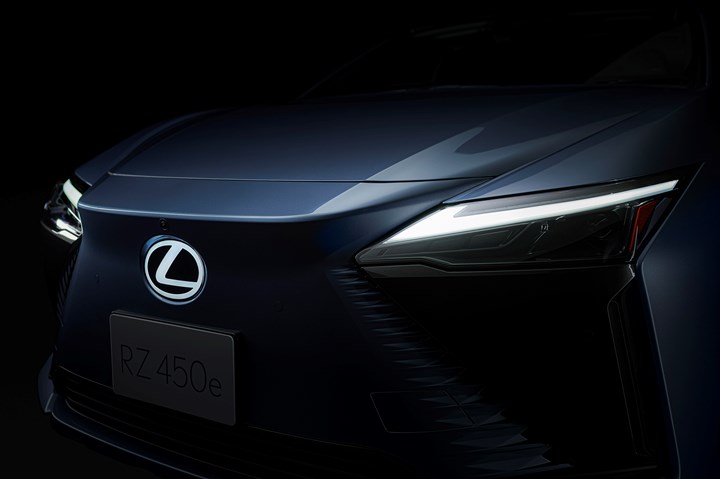
What’s notable about this is that the Lexus badge combines illumination along with transparency for the radar inside. (Image: Toyoda Gosei)
One of the characteristics of the front end of almost any vehicle is a badge on the front. A logo.
One of the characteristics of the front end of almost any new vehicle is a suite of sensors disguised as much as possible by the grille and fascia.
Like embedding millimeter-wave radar systems in the badge.
Toyoda Gosei has been supplying emblems that do just that.
But for the Lexus RZ electric vehicle, it amped things up.
It developed what it claims is the world’s first badge (in this case the stylized Lexus “L”) that is not only transparent to radar but that is also luminescent.
This is achieved by a metal (indium) surface coating technology and structural design. What’s more, care had to be taken so that there was no interference between the two systems.
In addition to its stylistic appearance and ADAS functionality, the emblem provides another function: it provides EV charging status.
Inside Approach
Another clever use of light the supplier developed for the Lexus RZ is used on the interior.
An LED lamp unit projects light and shadows on the surfaces of the doors at night.
Consequently, patterns that aren’t there in the daylight show up as darkness falls.
The light projectors are integrated into the side of the instrument panel just above the front arm rests, oriented so that the driver or passenger doesn’t cast shadows over the patterns.
So what appears to be a smooth interior door panel by day can appear to be a textured surface by night, all thanks to light.
///
Maserati Goes Colorless
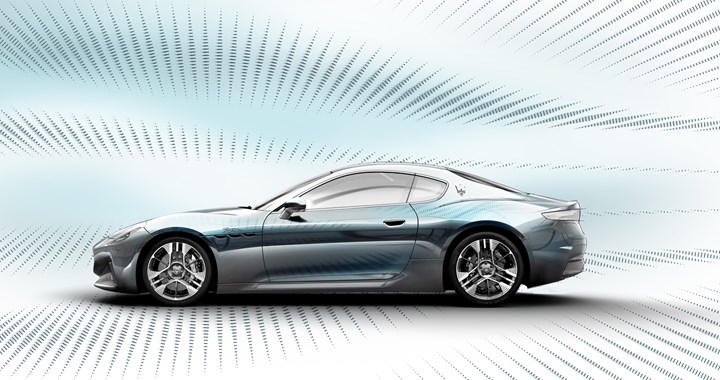
This Maserati is painted with a color that the company describes as “almost a non-color.” Think a mirrored surface. It isn’t a production color. Just a special surface for showing at the Milan Design Week. (Image: Maserati)
Maserati, for the soon-to-happen Milan Design Week, has developed a few vehicles that it will display.
One is the GranTurismo One Off Luce, an electric sports car.
It is based on the GranTurismo Folgore, the first Maserati EV. The car is fitted with three 300-kW permanent magnet motors, one in the front, two in the rear.
One of the interesting interior aspects of the car is the use of laser processing to provide the dashboard and other interior trim expressive surfaces.
The launch color for the car is “Rame Folgore.” It is an iridescent pigment that was inspired by the exterior of the Guggenheim Bilbao.
Singular Sensation
While that is certainly exotic, for the Milan Design Week not only is the Luce a single build (“One Off”), but they painted it with a color that, according to Maserati, doesn’t have an official name.
In fact, the company refers to it as “an almost non-color.”
It has a mirror-like surface so that the car reflects the environment and is almost stealth-like.
And to enhance the effect they’ve taken the laser outside, too, engraving graphics on the shiny, smooth surfaces.
///
More Bikes from Buell
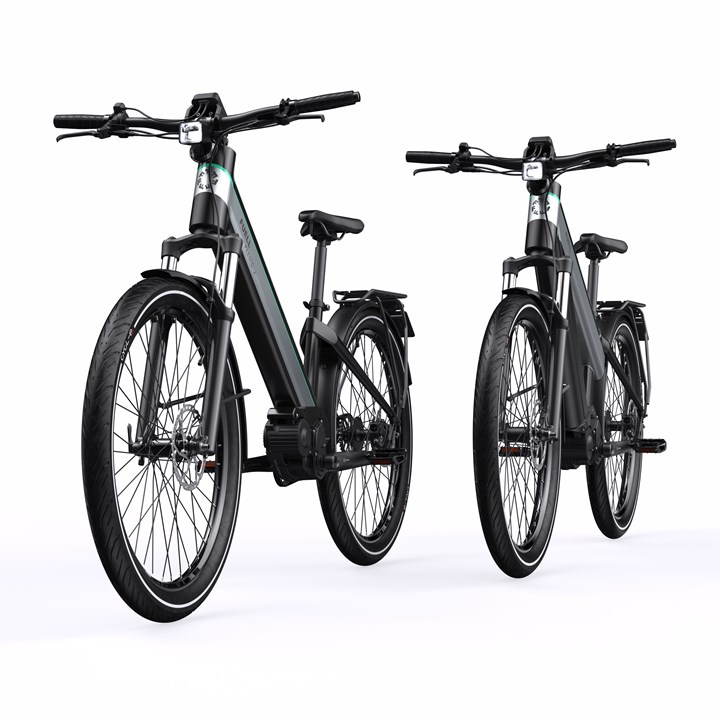
Electric bikes developed by Erik Buell. (Image: FUELL)
Here’s some exciting news for those who were enthusiastic the last time we wrote about Erik Buell: he has introduced two more electric bikes.
This time, not a motorcycle, but the FUELL Flluid-2 and 3, a pair of e-bikes with the Flluid-2 claimed to be the longest-range e-bike in the world: up to 225 miles on a single charge of its 2-kWh battery.
Buell is the chief technology officer and co-founder of FUELL. (And probably contributor to the name of the company as well as the extra letter in the name of the bikes.)
Buell:
“The creation of the FUELL Flluid-2 and 3 e-bikes was a complex and demanding journey that took many years of research and development. We faced a lot of challenges on our way such as creating e-bikes that comfortably fit customers from 5’ tall all the way to 6’4” tall, packing 2,000 Wh of battery into the frame without getting it too massive, providing a ‘just right’ balance of agility and confident handling to the riding experience, etc. I am proud to announce that we have successfully overcome all these challenges, developing e-bikes that meet the needs of today's urban commuters.”
Both bikes use a 750-W motor supplied by Valeo. (Yes, as in the automotive supplier.)
The propulsion unit includes a 48-V motor and a seven-speed automatic gearbox (developed with another French company, Effigear). The package is located in the pedal assembly.
(Valeo, incidentally, is serious about this two-wheel technology: it has capacitized a plant in Isère, France, for assembly of the motors. Given orders that it received from a number of bicycle manufacturers it expects to deliver more than 100,000 units in 2024.)
Base models of the bike have a top speed of 20 mph. There are “S” trims that go to 20 mph.
(That Fllow e-motorcycle we previously looked at, incidentally, has a sustained top speed of 85 mph.)
Buell:
“Flluid-2 & 3 are true and viable alternatives to cars.”
Well, maybe that’s a bit of an exaggeration.
///
2023 Toyota Prius Prime: People Don’t Buy Many Plug-Ins in General—But Maybe They Should Reconsider
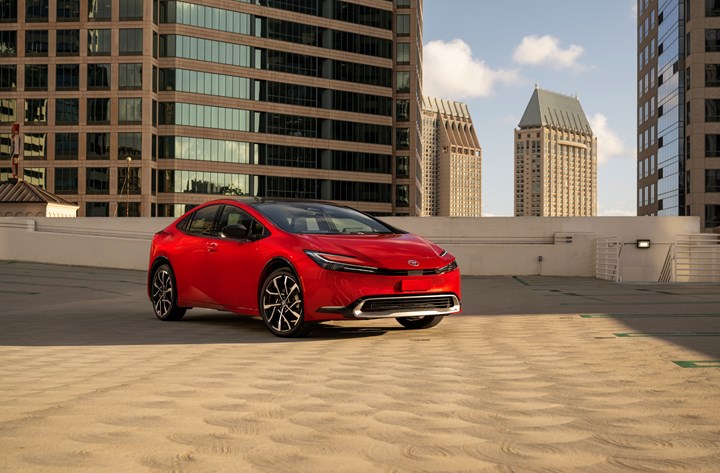
The Prius Prime: a plug-in hybrid that people who otherwise aren’t interested in plug-ins would undoubtedly be intrigued by given both its styling and the ability to 44 miles on electricity alone. (Image: Toyota)
Back in 2016, Tim Kuniskis, the man who is now running Dodge brand at Stellantis, had the FCA-North America passenger car brand portfolio, which included Chrysler. At the time, Chrysler was launching the Pacifica minivan.
There were two versions.
One with a conventional internal combustion engine and automatic transmission.
The other a hybrid that makes use of the “eFlite” electrically variable transmission with two electric motors.
The 2017 Pacifica Hybrid happens to be a plug-in hybrid.
It has a 16-kW lithium-ion battery that provides an estimated electric range of 33 miles and could be recharged on a 240-V system in about two hours.
(At this point—if not before—you’re looking at the headline and thinking: “I thought this was supposed to be about a Prius.” We’ll get there shortly.)
So not only was this the first hybrid minivan—the Toyota hybrid-only version of the Sienna wasn’t launched until 2020—but it was a plug in.
But Kuniskis said at the time of the Pacifica Hybrid intro that they didn’t want to refer to it as a “plug-in” hybrid (at least not in places other than California), as there was concern people would be confused. “Hybrid?” “Plug-in hybrid?” “Huh?”
Yes, plug-in hybrids then and even now are outliers in the market.
According to the U.S. Bureau of Transportation Statistics, in 2021 (its latest figures), there were 798,992 hybrids sold in the U.S., 459,426 full electric vehicles, and just 173,457 plug-in hybrids.
And now we get to Prius. And its plug-in.
Toyota Plugs In
Toyota, which essentially is to “hybrid” as Dodge is to “HEMI” (one imagines that were Kuniskis able to call the Pacifica Hybrid the “Pacifica Something Else,” not using the H-word, he would have), has had the Prius in the U.S. market since 2000.*
In 2012, it put the Prius Plug-In on the market, a powertrain variation of the third-generation hybrid. The plug-in model provided up to 15 miles of electric range from its 4.4-kWh lithium-ion battery.
For the fourth-gen Prius, the “Plug-In” moniker gave way to “Prime.” The 2017 Prius Prime features an 8.8-kWh battery and increased all-electric range of 25 miles.
And while the 2023, fifth-gen Prius has been on the market for a few months, it is now also time for Prime, as Toyota is making the plug-in version available, too, starting in May. It can go 44 miles in all-electric mode.
A Tale of Two Twins
Both vehicles, the Prius and the Prime, are based on the second-generation Toyota TNGA-C platform.
Both vehicles have the exterior sheet metal that has a form providing a 0.27 coefficient of drag.
Both vehicles have the same M20A-FXS 2.0-liter four-cylinder engine running the Atkinson cycle that produces 150 hp.
But then it gets a little different.
The system output for the Prius Prime—with the system adding the electric motor output (there is a 161-hp permanent magnet AC synchronous motor driving the front wheels)—is 220 hp.
The system output for the Prius is 194 hp for FWD models and 196 hp for the AWD versions.
Another Difference
Yes, while the regular hybrid Prius is available in either FWD or AWD, the Prius Prime is FWD only.
The reason?
Packaging. The Prius Prime has a 13.6-kWh lithium-ion battery, which is certainly bigger than the 0.9-kWh battery pack in the standard Prius, and they had to put it somewhere.
And Still Another (Beyond the 44 miles of full electric driving)
The Prius Prime, in its own way (sorry to keep dragging Dodge back into this, but let’s use it contextually), is meant to be more about performance than maximum fuel efficiency.
Toyota points out that the Prius Prime can go from 0 to 60 mph in 6.6 seconds. Quick for a Prius (a ’23 FWD Prius requires 7.2 seconds), but think only of something with the aforementioned HEMI. . .
But for what it is, and for the way it looks, the additional oomph is appropriate.
While there are those all-electric miles, the Prius without a plug provides better fuel efficiency.
That is, for the base model Prime, the SE, the estimated fuel efficiency numbers are: 53/51/52 mpg (city/highway/combined).
The base Prius, the LE with front-wheel drive (like the Prime) turns in 57/56/57 mpg.
And if we go to the higher trims of the Prime (XSE, XSE Premium), the numbers are 50/47/48 mpg and the top-of-the-line Prius, the XLE and Limited AWD, provides 49/50/49 mpg.
But again, there is the plug for the Prime. Plug it into a standard 120-V outlet and the battery charges in about 11 hours. On a Level II charger, about four. And as the Prime is a hybrid, there is still the fundamental fuel efficiency, even if someone skips the plug.
What It Takes
The Prius Prime comes in three trims, SE, XSE and XSE Premium. The starting MSRP for each are, respectively, $32,350, $35,600 and $39,170.
And by way of comparison, the Prius also comes in three trims (LE, XLE and Limited), but each of these has an AWD variant. The MSRP bandwidth for those vehicles is from $27,450 for an LE FWD to $35,865 for a Limited AWD.
Best of Both Worlds
While some people want an electric vehicle, there is still that very real issue of a need for additional infrastructure, which leads to the psychological range anxiety. Driving a vehicle while almost continuously glancing at the state of charge isn’t the sort of thing that makes for a pleasant or even neutral experience. After all, if you’ve got 10 miles of range and the nearest charger is 11 miles. . . .
So the Prius Prime provides the pure electric drive for admittedly a fraction of what even a bad EV provides. . .but then several hundred miles of driving after those 44 miles of EV driving are gone.
And just considering the aforementioned fuel efficiency numbers in a car that looks as good at the Prius and the Prime do make it a serious consideration for those who are concerned with reducing their overall carbon footprint. No, it doesn’t take you to as close to zero as a full EV, but there are the advantages of getting to where you need to go on a daily basis (Toyota estimates 32 miles per day is an average) and where you might want to go if that happens to be on the other side of the state (Texas north to south is about 800 miles and 770 miles east to west, so you could do either of them in a Prius Prime while stopping once for gas, which takes an average time of less than five minutes—try that in an EV of any type.)
==
*Years back Toyota made a commitment to hybridize more of its vehicles and it has made good on that. At present, in addition to the two Prius variants, there are hybrid versions of the Corolla, Camry, Highlander, Sequoia, RAV4 (two types), and Tundra; the Crown, Sienna and Venza are available as hybrid-only. Coincident with the launch of the Prius Prime, Toyota is adding a hybrid version to its small SUV, the Corolla Cross. There are two notable differences between the gas-only powered Corolla Cross and the hybrid version: (1) the hybrid is more powerful, with a system output (engine and permanent magnet motor combined) of 196 hp compared with the 169 hp of the non-hybrid version; (2) the hybrid is offered as an all-wheel-drive-only vehicle; the gasoline-powered version is front-drive as standard with AWD available. In terms of fuel economy, the hybrid offers an estimated 45/38/42 mpg (city/highway/combined); the highest numbers for the non-hybrid version is an FWD model at 31/33/32 mpg. One interesting aspect of the two vehicles is that the packaging of the hybrid system doesn’t compromise the interior volume as the cargo volume for the hybrid (remember: AWD only) and the AWD gas versions are both 21.5 cubic feet with all seats up, and the passenger volume is also the same: 88.4 cubic feet without a moonroof and 87.3 cubic feet with one. The hybrid is available in three grades, S with a starting MSRP of $27,970; SE at $29,290; XSE at $31,065.
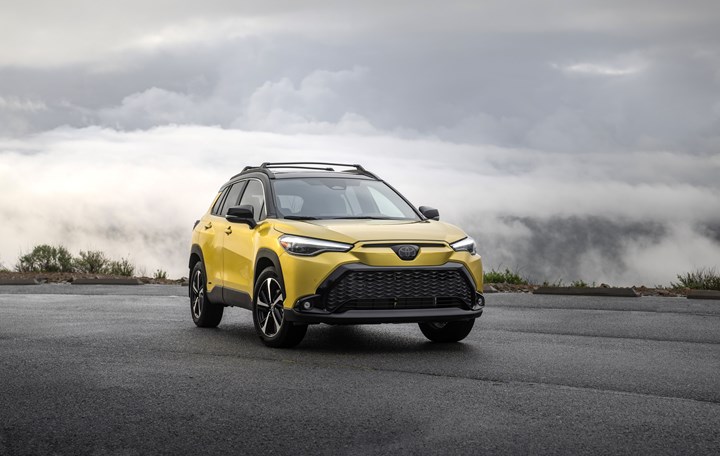
The Corolla Cross Hybrid. (Image: Toyota)
///
You Really Can’t Put This More Clearly
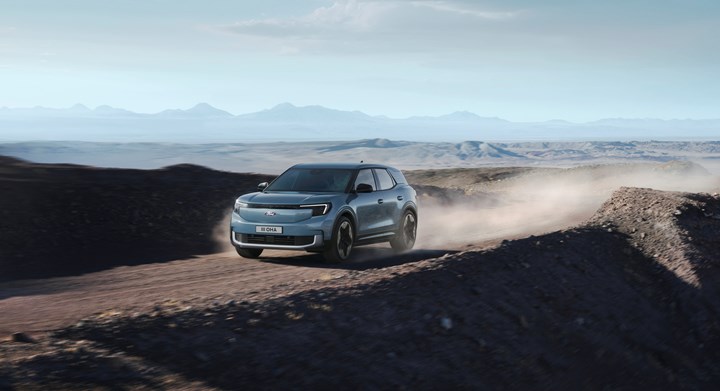
The European market has proven a bit challenging for the traditional Detroit OEMs. Ford is working to improve its fortunes with things like this, a Euro electric Explorer. (Image: Ford)
“The American carmakers GM, Ford and Chrysler have experienced difficulties in the European market since the 1970s. The Chrysler group sold its European subsidiaries to PSA in 1978 and the GM group sold its to PSA in 2017. Only the Ford group survives in Europe with its European subsidiaries, but its production rates have collapsed on the Old Continent. In the last twenty years alone, the fall has been colossal. The production volume has thus fallen from 1.2 million passenger cars to less than 600,000 units in 2022.”—"Automotive Worldwide Market Analyses: Production-Registrations-Plants-Models,” Inovev, 4/7/23
In the case of Chrysler, it is part of Stellantis, which is the company formed in 2021 when Fiat-dominant Fiat Chrysler Automobiles combined with PSA Group. And while GM found it exceedingly difficult to make anything but red ink in Europe with its brands there, Stellantis reported its 2022 results included €16.8 billion net profit and €23.3 billion Adjusted Operating Income (AOI).
Ford is rolling out six EVs in Europe. Presumably to change the fall to a rise.
Stellantis, incidentally, is in the process of executing its “Dare Forward 2030” plan, which is announced in March 2022, that calls for 100% of its vehicles in the European Union to be electric by 2030.
Given that its brands include Abarth Alfa Romeo, Chrysler, Citroën, Dodge, DS Automobiles, Fiat, Jeep, Lancia, Maserati, Opel, Peugeot, RAM, and Vauxhall, even if each were to put out one EV model, there would be far more than six.
///
The Remarkable Demand for EVs

The 2024 Chevy Equinox EV. Affordability is going to make a big difference in EV uptake, a Consumer Reports study found. Having vehicles on the lot for consumers to buy is, obviously, important, too. (Image: Chevrolet)
Last year Consumer Reports conducted a survey on the subject of electric vehicles. Chris Harto, senior policy analyst for the organization, speaking at a conference organized by the Automotive Futures group, “EV Challenges and Opportunities,” said they found that 14% surveyed said they’d “definitely buy or lease an electric-only vehicle.”
While 14% might not seem a big number, Harto said that represents some 36-million potential buyers.
But there’s an issue: Availability.
CR calculates that even though there was a 230% increase in the number of EVs available in the market in 2022 compared with 2020, that number is 800,000 vehicles.
So, Harto pointed out, that’s about one vehicle for 45 buyers.
Harto suggested that it is unlikely that more than 20% of Americans will be able to own an EV by 2032 given the likely EV availability in the market.
ICE Becomes More Iffy
That said, the outlook for internal combustion engines (ICEs) doesn’t look promising: “We don’t see conventional ICE vehicle demand going back anywhere close to where it was before,” he said, noting that ICE sales dropped 26% between 2019 and 2022. During the same period EV sales increased 244%.
Harto pointed out that in the not-too-distant future—say around 2032—EVs will have cost parity with ICE vehicles, provide 300 to 400 miles of range, and provide a lower lifetime operating cost on the order of $15,000 to $20,000. Changing will be more ubiquitous. More people will have experienced the smoother, quitter acceleration provided by EVs.
When that happens, then, “Beyond towing, what is the consumer value proposition for a new ICE vehicle?”
[That could have been a moment to drop the mic.]
///
Aurora Advances Autonomy
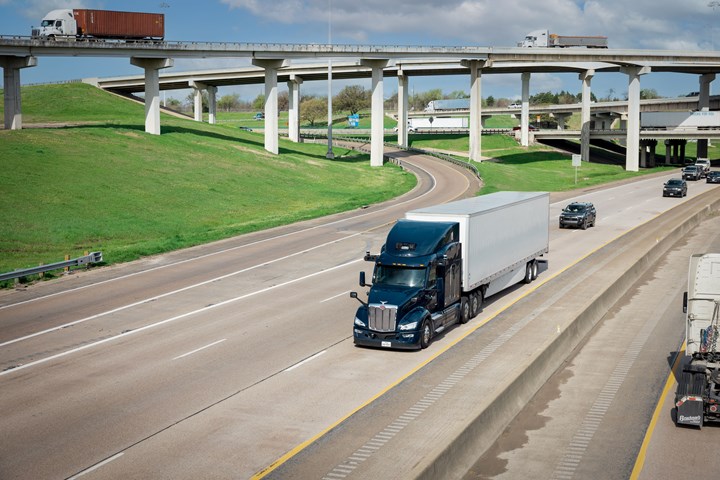
Aurora is getting closer and closer to being able to offer autonomous driving systems for big rigs on a commercial basis. (Image: Aurora)
While there is considerable attention—good and bad—on autonomous technology for giving people rides in places like San Francisco and suburban Phoenix, odds are if autonomy is going to have a big impact it is going to be in the commercial space—as in trucking, not Uber replacement.
Last week Aurora Innovation—the company founded by Chris Urmson, former CTO of Google’s self-driving ops, Sterling Anderson, former director of Tesla Autopilot, and Drew Bagnell, former autonomy and perception lead at Uber—announced that its “Aurora Driver is Feature Complete.”
Which doesn’t sound particularly important.
But it is, as it is moving the autonomous tech company ever so closer to the launch of its autonomous trucking subscription service, Aurora Horizon, which is expected to launch next year.
The “Driver” consists of the hardware (e.g., computer; sensors) and software (e.g., for perception, motion planning, mapping, simulation) that allows a vehicle—such as a Class 8 truck—Aurora is working with PACCAR, Peterbilt, Kenworth, and Volvo (and Toyota, but not in the big rig space)—to operate autonomously.
So to get back to the importance of the “Feature Complete,” here’s what Sterling Anderson, Aurora chief product officer, wrote about what is called “Aurora Driver Beta 6.0,” which is the release reflecting the completion:
“Aurora Driver Beta 6.0 marks the first time a fleet of trucks is equipped to operate with all of the primary technical features and driving capabilities required by our commercial product—from common maneuvers like negotiating lane changes, unprotected turns, or active construction zones, to slightly less common scenarios involving scattered road debris or emergency vehicles, to rare events like collisions or extreme weather.
“With the release of Aurora Driver Beta 6.0 and the achievement of our Feature Complete milestone, we’ve completed the development of our self-driving system architecture.”
Now the company is working on its “Safety Case,” deploying a methodology the likes of which has been used by industries including aviation, nuclear and medical devices.
In the introduction to its “2022 Safety Report” the company wrote, “Delivering a safe product is a critical part of developing self-driving technology; so is being transparent with our approach. The safety case is one way in which we can show our work.”
Math teachers everywhere would find that last sentence satisfying.
RELATED CONTENT
-
On The Jeep Grand Cherokee, 2022 Nissan Pathfinder, and More
An inside look at the Detroit Assembly Complex-Mack; a innovative approach to waste-free, two-tone painting; why a forging press is like an F1 car; and other automotive developments.
-
Mustangs, Camaros and F-150s
If you’re shopping for a Mustang, you’re faced with a variety of choices, not simply in terms of the color or the wheels that you’re going to be applying to your ride, but in terms of which model you’re going to select.
-
Behind the Chevrolet Bolt
There are some cars that are simply profoundly important than others, and when it comes to cars introduced of late, the Chevrolet Bolt is certainly one of those particularly notable cars.


.jpg;width=70;height=70;mode=crop)






